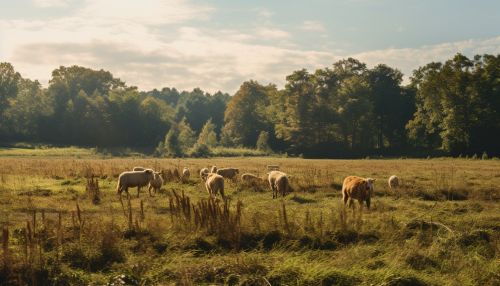The Science of Animal Foraging Strategies and Ecological Niches
Introduction
Animal foraging strategies are the tactics and methods employed by animals to locate, select, and capture food. These strategies are influenced by various factors, including the animal's physiological state, the availability and distribution of food resources, and the presence of competitors or predators read more. The strategies adopted by animals can significantly impact their survival and reproductive success, making this a crucial area of study in the fields of ecology and behavioral ecology.
Types of Foraging Strategies
There are several types of foraging strategies that animals employ, each with its unique characteristics and adaptations. These include:
Solitary Foraging
In solitary foraging, animals search for food alone. This strategy is often used by animals that feed on dispersed, low-density food resources, such as fruit trees or insect populations. Solitary foragers include many species of birds, mammals, and insects.
Group Foraging
Group foraging involves animals searching for food in groups. This strategy can increase the efficiency of locating food resources and provide protection against predators. Examples of group foragers include meerkats, wolves, and many species of birds.
Central Place Foraging
In central place foraging, animals collect food and bring it back to a central place, such as a nest or den. This strategy is often used by animals that need to provide food for their offspring or other group members. Central place foragers include many species of birds and mammals, such as penguins and beavers.
Scavenging
Scavenging involves animals feeding on dead or decaying organisms. This strategy is often used by animals that are opportunistic feeders, such as vultures and hyenas.


Ecological Niches
An ecological niche refers to the role an organism plays in its environment, including its interactions with other organisms and its use of resources. The concept of the ecological niche is central to understanding the distribution and abundance of species, as well as the structure and dynamics of communities.
Fundamental and Realized Niches
The fundamental niche of a species includes the full range of environmental conditions under which it can survive and reproduce. In contrast, the realized niche is the portion of the fundamental niche that a species actually occupies, given the constraints of competition, predation, and other biotic interactions.
Niche Differentiation
Niche differentiation, also known as niche partitioning, refers to the process by which competing species use the environment in different ways to coexist. This can involve differences in the use of resources, such as food or habitat, or differences in the timing of activities, such as foraging or breeding.
Niche Construction
Niche construction refers to the process by which organisms modify their environment, thereby influencing the selection pressures they and other species experience. Examples of niche construction include beavers building dams, which create new habitats for other species, and earthworms altering soil structure, which affects plant growth.
Foraging Strategies and Ecological Niches
The foraging strategies adopted by animals are closely linked to their ecological niches. For example, the type of food an animal eats, the time of day it feeds, and the way it captures or collects food can all be considered aspects of its niche.
Effects of Foraging Strategies on Niche Breadth
The breadth of an animal's niche, or the range of resources it uses, can be influenced by its foraging strategy. For example, animals that use a generalist foraging strategy, feeding on a wide variety of foods, tend to have broader niches than those that use a specialist strategy, feeding on a narrow range of foods.
Impacts of Niche Differentiation on Foraging Strategies
Niche differentiation can lead to the evolution of different foraging strategies among species. For example, in a community of bird species that feed on insects, one species might specialize in catching insects in flight, while another might specialize in picking insects off leaves.
Conclusion
Understanding the foraging strategies of animals and their ecological niches provides valuable insights into the dynamics of ecological communities. These concepts are fundamental to the study of ecology and have important implications for conservation and wildlife management.
